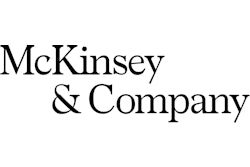
Derrick Moreira with Censeo Consulting
By Derrick Moreira
Most supply management organizations recognize the value of demand management in theory as a key lever for driving efficiency and reducing total costs. But they also know that realizing the value of demand management in reality is hard work. It requires patience and a willingness on the part of internal customers to change.
Too often, demand management strategies falter or fail — or are never pursued to begin with — even though the payoff can be substantial. Companies can reduce spend by 10-20 percent through demand management. But realizing those savings can be daunting indeed.
For starters, many and varied stakeholders across the enterprise need to devote time, effort and "personal capital" to develop and implement demand management strategies successfully. Second, demand management often requires significant change: People must act in new ways and organizations must rethink traditional structures and lines of communication. Finally, to be truly effective, demand management must become an ingrained, deeply embedded part of the culture over time.
So, with all of these challenges, what can an organization do to ensure demand management success? The answer, Censeo Consulting Group believes, lies in integrating change management as a core component of any demand management program. Change management strategies address the more complex human and organizational elements — the "soft" elements, so to speak — that often block effective demand management. Yet the results can be measured in hard dollars. For example, in one particularly dramatic example of the benefits of change management, a project team from our company told a client sourcing an IT-related commodity, "Without change management, you will realize only half of the projected savings." The cost to achieve the additional millions in savings through change management? A few hundred thousand dollars.
In this article, we will follow a single project through five key points where demand management and change management intersect. The client was a large organization, with hundreds of sites across the country, hoping to reduce its outlays for small package delivery services. Spend was in the hundreds of millions of dollars.
1. Zero in on demand management opportunities. The project was jumpstarted when the client saw previously unavailable data about how the firm used package delivery services. Business case analysis showed a savings opportunity of 15-20 percent through adopting best practices and more informed decision-making by the user community. These opportunities depended almost completely on changing user behavior.
In all such projects, the team must differentiate "needs" from "wants." Needs are essential to the critical outcome of the task. For example, a package must arrive at its destination undamaged and on time. Wants, such as overnight delivery for an unimportant package, are not considered essential. But it is easy to see how wants can become expensive habits: "We always overnight things to Joe."
Once the opportunities were identified, the organization had to decide how aggressively to proceed. The primary client understood and agreed with the proposed changes. Senior leadership, impressed with the business case, was ready to establish top-down guidelines for usage decisions and process changes.
2. Identify the stakeholders — all of them — and their concerns regarding the changes. Beyond senior leaders and our client were literally hundreds of people who had full discretion in choosing delivery services, from priority overnight to two-day, ground and still more choices. They would be asked to adopt new electronic tools that created shipping documents electronically instead of manually and displayed shipping and pricing options. The company believed that if users could compare the cost of different services that would meet their needs, they would make better business decisions. In addition to the tools, users would rely on new guidelines that defined a standard class of service to be used consistently except in specified cases.
The firm's top executives, our client and the person managing this area (who was also the client's subject matter expert) were fully on board. The changes held no downside for them, and their primary interest was in achieving the potential bottom-line impact. But hundreds of end users would be required to change how they carried out their daily tasks. They were concerned about the impact on themselves and their jobs. Why is this happening? Will it mean extra work? Why can't I just keep doing it the way that I've always done it?
3. Communicate with stakeholders to get "buy in" from the beginning. In this case, we worked with senior stakeholders and our direct client collaboratively. Some became team members; others gave feedback and received face-to-face briefings on progress. Regardless of the level of stakeholder, a useful mantra in change management is: "Ask as well as tell."
For stakeholders closely involved with the delivery process, the communications plan included "town halls" with question-and-answer sessions along with a range of change management collateral. The team made every effort to explain why change was taking place, what alternatives were being provided, and how to get questions answered as the project continued. Delivery service users were encouraged to visit the program Web site and received newsletter e-mails, service-usage guidelines and the official policy manual. The team also planned a focused personal outreach effort to engage key users.
4. Adapt policies and processes to realize demand-driven efficiencies. Policy, process and technology all came into play in demand management. The new policies and processes were fully documented and distributed, and new tools were rolled out across the organization. The change management program took advantage of the client's internal communications media not only to get the message across but also to reinforce the positive impact that every user can make. Regular updates publicized the savings generated by the effort and served as visible reminders and a source of pride to users across the organization. This recognition drove more people to adopt the desired behaviors.
5. Instill demand management in the culture so it becomes self-sustaining and automatic over time. At this point, the intersection of demand management and change management has given the client a roadmap to save upwards of 15-20 percent in annual package delivery costs. However, the hurdles to turn this estimate into a reality are not small ones. The final step of institutionalizing the changes is ultimately the most critical, as well as the most difficult, element of success.
To capture the changes not just once but over time, the client will have to maintain an intense focus on the initiative, from the top down. It is human nature to think that because the preparation is complete, the work has been done. (Anyone who has spent long hours creating a strategic plan will recognize that feeling.) If executive sponsorship disengages, the momentum could easily dissipate. Similarly, if leaders endorse the lower-cost delivery alternative as a standard but continue to demand all their packages be sent overnight, the rank and file will instantly spot the gap between message and action.
As the program rolls out, it should be reviewed and revised, drawing upon the experience of those in the frontlines. The end users will discover holes; trial and error will surface better approaches; new technologies will raise the bar. Every fresh, inventive program eventually becomes stale if not updated and re-marketed.
Finally, it's important to point out that the effort and investment in change management have payoffs well beyond a single initiative. The organization is laying the groundwork for the user community and the enterprise as a whole to change the way they think (or don't think) about the goods and services that they use. People may begin by checking the guidelines and shipping two-day instead of priority overnight. Then they question the need to send a document physically at all — and the costly package becomes an e-mail attachment. At that stage, when people look at a task and instinctively search for a better way to accomplish it, demand management and change management can point to another success.
About the Author: Derrick Moreira is a director at Censeo Consulting Group, a strategy consulting firm that helps C-level executives in large commercial and government organizations unlock value from their most complex supply chain and operational challenges. More information at www.censeoconsulting.com.
Most supply management organizations recognize the value of demand management in theory as a key lever for driving efficiency and reducing total costs. But they also know that realizing the value of demand management in reality is hard work. It requires patience and a willingness on the part of internal customers to change.
Too often, demand management strategies falter or fail — or are never pursued to begin with — even though the payoff can be substantial. Companies can reduce spend by 10-20 percent through demand management. But realizing those savings can be daunting indeed.
For starters, many and varied stakeholders across the enterprise need to devote time, effort and "personal capital" to develop and implement demand management strategies successfully. Second, demand management often requires significant change: People must act in new ways and organizations must rethink traditional structures and lines of communication. Finally, to be truly effective, demand management must become an ingrained, deeply embedded part of the culture over time.
So, with all of these challenges, what can an organization do to ensure demand management success? The answer, Censeo Consulting Group believes, lies in integrating change management as a core component of any demand management program. Change management strategies address the more complex human and organizational elements — the "soft" elements, so to speak — that often block effective demand management. Yet the results can be measured in hard dollars. For example, in one particularly dramatic example of the benefits of change management, a project team from our company told a client sourcing an IT-related commodity, "Without change management, you will realize only half of the projected savings." The cost to achieve the additional millions in savings through change management? A few hundred thousand dollars.
In this article, we will follow a single project through five key points where demand management and change management intersect. The client was a large organization, with hundreds of sites across the country, hoping to reduce its outlays for small package delivery services. Spend was in the hundreds of millions of dollars.
1. Zero in on demand management opportunities. The project was jumpstarted when the client saw previously unavailable data about how the firm used package delivery services. Business case analysis showed a savings opportunity of 15-20 percent through adopting best practices and more informed decision-making by the user community. These opportunities depended almost completely on changing user behavior.
In all such projects, the team must differentiate "needs" from "wants." Needs are essential to the critical outcome of the task. For example, a package must arrive at its destination undamaged and on time. Wants, such as overnight delivery for an unimportant package, are not considered essential. But it is easy to see how wants can become expensive habits: "We always overnight things to Joe."
Once the opportunities were identified, the organization had to decide how aggressively to proceed. The primary client understood and agreed with the proposed changes. Senior leadership, impressed with the business case, was ready to establish top-down guidelines for usage decisions and process changes.
2. Identify the stakeholders — all of them — and their concerns regarding the changes. Beyond senior leaders and our client were literally hundreds of people who had full discretion in choosing delivery services, from priority overnight to two-day, ground and still more choices. They would be asked to adopt new electronic tools that created shipping documents electronically instead of manually and displayed shipping and pricing options. The company believed that if users could compare the cost of different services that would meet their needs, they would make better business decisions. In addition to the tools, users would rely on new guidelines that defined a standard class of service to be used consistently except in specified cases.
The firm's top executives, our client and the person managing this area (who was also the client's subject matter expert) were fully on board. The changes held no downside for them, and their primary interest was in achieving the potential bottom-line impact. But hundreds of end users would be required to change how they carried out their daily tasks. They were concerned about the impact on themselves and their jobs. Why is this happening? Will it mean extra work? Why can't I just keep doing it the way that I've always done it?
3. Communicate with stakeholders to get "buy in" from the beginning. In this case, we worked with senior stakeholders and our direct client collaboratively. Some became team members; others gave feedback and received face-to-face briefings on progress. Regardless of the level of stakeholder, a useful mantra in change management is: "Ask as well as tell."
For stakeholders closely involved with the delivery process, the communications plan included "town halls" with question-and-answer sessions along with a range of change management collateral. The team made every effort to explain why change was taking place, what alternatives were being provided, and how to get questions answered as the project continued. Delivery service users were encouraged to visit the program Web site and received newsletter e-mails, service-usage guidelines and the official policy manual. The team also planned a focused personal outreach effort to engage key users.
4. Adapt policies and processes to realize demand-driven efficiencies. Policy, process and technology all came into play in demand management. The new policies and processes were fully documented and distributed, and new tools were rolled out across the organization. The change management program took advantage of the client's internal communications media not only to get the message across but also to reinforce the positive impact that every user can make. Regular updates publicized the savings generated by the effort and served as visible reminders and a source of pride to users across the organization. This recognition drove more people to adopt the desired behaviors.
5. Instill demand management in the culture so it becomes self-sustaining and automatic over time. At this point, the intersection of demand management and change management has given the client a roadmap to save upwards of 15-20 percent in annual package delivery costs. However, the hurdles to turn this estimate into a reality are not small ones. The final step of institutionalizing the changes is ultimately the most critical, as well as the most difficult, element of success.
To capture the changes not just once but over time, the client will have to maintain an intense focus on the initiative, from the top down. It is human nature to think that because the preparation is complete, the work has been done. (Anyone who has spent long hours creating a strategic plan will recognize that feeling.) If executive sponsorship disengages, the momentum could easily dissipate. Similarly, if leaders endorse the lower-cost delivery alternative as a standard but continue to demand all their packages be sent overnight, the rank and file will instantly spot the gap between message and action.
As the program rolls out, it should be reviewed and revised, drawing upon the experience of those in the frontlines. The end users will discover holes; trial and error will surface better approaches; new technologies will raise the bar. Every fresh, inventive program eventually becomes stale if not updated and re-marketed.
Finally, it's important to point out that the effort and investment in change management have payoffs well beyond a single initiative. The organization is laying the groundwork for the user community and the enterprise as a whole to change the way they think (or don't think) about the goods and services that they use. People may begin by checking the guidelines and shipping two-day instead of priority overnight. Then they question the need to send a document physically at all — and the costly package becomes an e-mail attachment. At that stage, when people look at a task and instinctively search for a better way to accomplish it, demand management and change management can point to another success.
About the Author: Derrick Moreira is a director at Censeo Consulting Group, a strategy consulting firm that helps C-level executives in large commercial and government organizations unlock value from their most complex supply chain and operational challenges. More information at www.censeoconsulting.com.



















